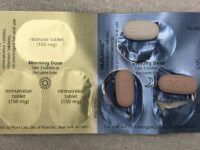Amid the late-night bustle of an Irish bar in Boston, Northeastern professor Dr. Samuel Scarpino focuses on the glow of a laptop screen with a visiting colleague from Oxford. It is mid-February of 2020, and the two are writing the first manuscript for a paper about a disease outbreak in Wuhan, China. They publish the manuscript only weeks later, and Scarpino’s lab, the Emergent Epidemics Lab, becomes among the first in the world to publish a paper on COVID-19 in which they outline how the lockdown of Wuhan, a city with over 10 million residents, caused a mass migration event as individuals fled to avoid the travel restrictions. Only a few months later, the Irish bar goes out of business because of the strain caused by the pandemic.
The Emergent Epidemics Lab has played a role in the response of every major infectious disease outbreak since 2009 — including the United States H1N1 swine flu outbreak, the West African Ebola outbreak, the Zika outbreaks in North and South America, and now, the coronavirus pandemic. The lab takes a unique “bottom-up” approach to understanding outbreaks. While traditional models look at the broad trends and phenomena of disease infections in large populations, the Emergent Epidemics Lab looks first at the behavior of individuals, which they then use as the foundational basis to construct mathematical models and computer simulations to describe and predict the spread of disease.
While traditional models look at the broad trends and phenomena of disease infections in large populations, the Emergent Epidemics Lab looks first at the behavior of individuals.
“Pandemics emerge from this combination of bottom-up interactions and top-down forces regulating these interactions … These top-down forces are where we don’t have very good data systems – we don’t have a coordinated national response,” Scarpino told NU Sci. The lab works to improve data infrastructures in public health, use data to better understand disease spread from the bottom up, and then make policy recommendations based on those results. They bridge the disconnect between individual interactions and government policy. This approach, rooted in the discipline of network science, is a hallmark of the lab and responsible for many of the lab’s key contributions to our understanding of COVID-19.
One paper published by the lab demonstrated that because COVID-19 infections are unpredictable and random in nature on the individual level, the uncontrolled spread of the virus is almost solely driven by large super-spreader events where dozens or hundreds of individuals are in close contact with a positive case. The authors concluded that policy focusing on preventing these events, where some infection is almost guaranteed, could mitigate spread. Another of their papers surveyed over a quarter-million people and found that a 10 percent increase in community mask wearing resulted in a 300 percent increase in the likelihood of controlling spread but that government mask mandates had little influence on the percentage of individuals who wore masks.
Scarpino and the Emergent Epidemics Lab were tapped to create mathematical models to project virus spread on campus and estimate the effect of policies like testing, contact tracing, and the University’s hybrid learning system.
The lab also played an integral part in developing Northeastern University’s COVID-19 protocol once administrators had made the decision to open in the fall of 2020. Scarpino and the Emergent Epidemics Lab were tapped to create mathematical models to project virus spread on campus and estimate the effect of policies like testing, contact tracing, and the University’s hybrid learning system. These models informed the University’s decision to test members of the Northeastern community every three days — just under the average time it takes an infected individual to become contagious. Rigorous surveillance, preventative guidelines for gatherings, regular testing, and proactive contact tracing have all paid off. “There’s basically been no transmission on campus. The positive cases have almost exclusively been people who got infected off campus and then were identified here.” Scarpino said.
Scarpino hopes the work the Emergent Epidemics Lab has done in conjunction with Northeastern can act as an example and proof of concept that a much more coordinated, data-driven, and science-based response to disease outbreaks is possible — and could even prevent the next outbreak from becoming a pandemic. “You think about building all of these tools and data systems to respond in the first 30, 60, or 90 days after one of these pathogens is discovered — whether that’s the seasonal influenza, tuberculosis … or the next infectious disease,” Scarpino said. “We’ve seen this with COVID. You can’t titrate the response; you can’t have mitigation strategies. You have to eliminate it.”
Northeastern students interested in getting involved with the essential work of the Emergent Epidemic Lab can contact Professor Scarpino at s.scarpino@northeastern.edu.
PLoS Biology (2020). DOI: 10.1371/journal.pbio.3000897
The Lancet (2021). DOI: 10.1016/S2589-7500(20)30293-4
Image source: NappyStock.






